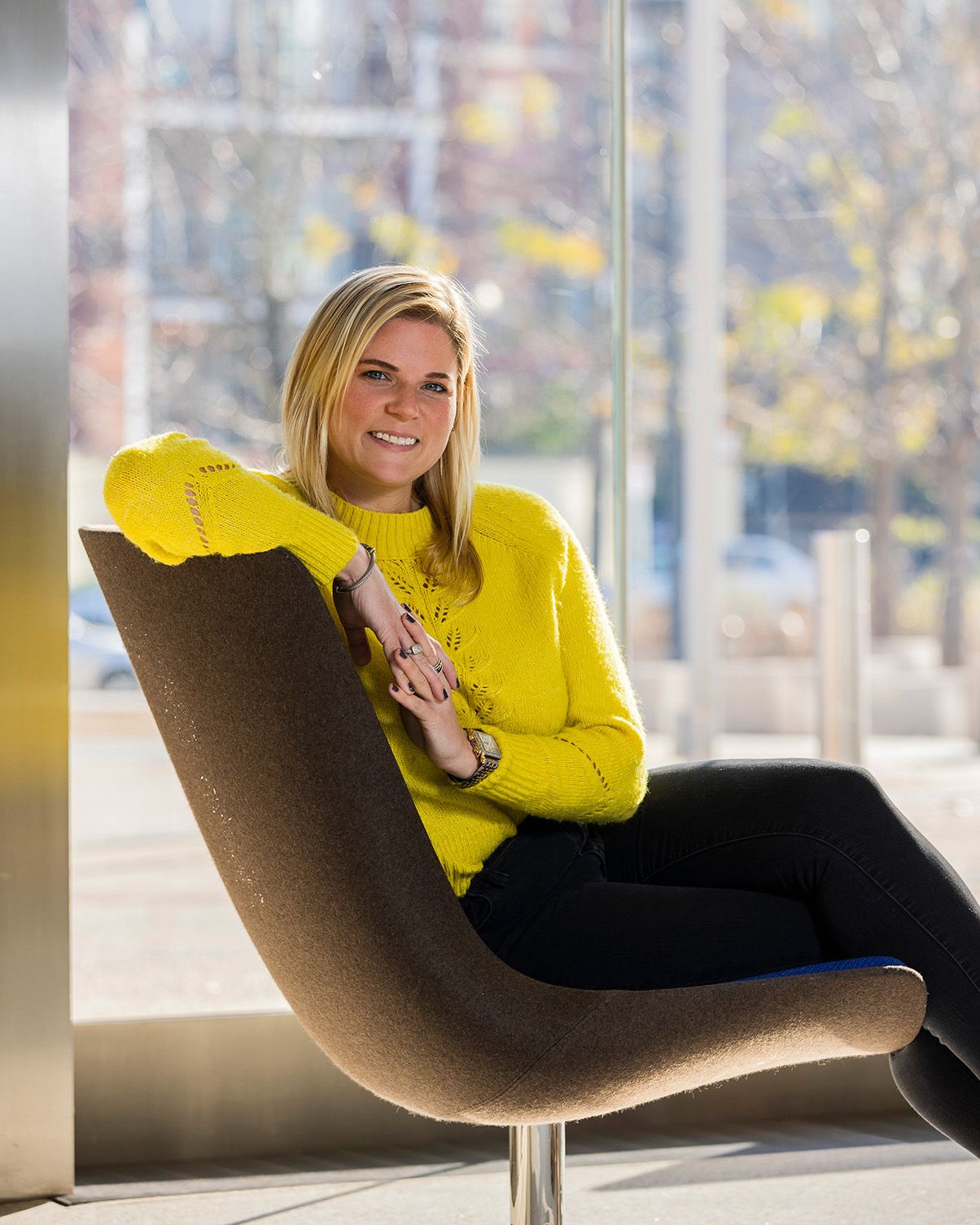Article
Don’t Let Cancer Keep You From Hiking This Summer
Author(s):
“Hiking is a great activity for all of us, including cancer survivors,” writes a breast cancer survivor. “As long as we can put one foot in front of the other, being out on a trail is inspirational and health-affirming.”
Recently, my hiking group decided to go on a big adventure. Rather than a trail near home, our destination was Cumberland Gap National Park, about two hours from where I live. We would focus on the Ewing and Ridgeline trails with access to White Rocks and Sand Cave. While I can hike until the cows come home, I was worried about this trip because it was outside my comfort zone.
White Rocks, high atop the eastern edge of the Cumberland ridge, was a daunting destination (for me). Looking at photographs of a ladder I would have to climb to access Sand Cave added to my worries. Completely sure I would not be able to do either of these side treks, I said I would go on our trip. Once I was there, I told myself I would bow out and wait while everybody else got really adventurous.
I am not afraid of a hiking challenge. I just was not sure if I had the upper arm strength for more. My right arm, with lymphedema, is pretty strong, but I pamper it a little anyway. Plus, my range of motion, while almost normal, has never been the same since cancer surgery. My left arm, recovering from a fractured wrist and a strained muscle, has less mobility than it will have once my arm is like new again (knock on wood). I just did not think I would have the range of motion to clamber up some rocks or down a ladder. But I did!
One of the most amazing things about hiking with a group of friends is that you might end up doing things you do not think you can do. Nobody pushes me, not exactly, but the belief others have that I can do more than I think I can is inspirational. I ended up joining my friends that day in a full adventure. I took my time scrambling on rocks that led up to White Rocks. Then I got to see an amazing vista that included a hawk soaring by. I was also nervous about going down, but got down with ease. Then, the ladder to Sand Cave, to my delight, turned out to be broad beams of wood that made the climb more accessible.
At some point in this hike, alone with my thoughts, I felt more empowered than I have in a long time. I let my psyche soak in the awesome landscape with friends, birds and flowers charming me every step of the way. You just do it, you see. From hiking to cancer, one foot in front of the other, best you can. Just put one foot in front of the other.
On my mantel, in fact, is a photograph of my first big hike with my hiking group. Two weeks after my mastectomy, we climbed up Mount Rogers—the highest peak in Virginia—and down again on the other side. That hike was not easy. I was still in pain from my surgery, which included removal of lymph nodes, and I was feeling the weight of a serious diagnosis. But when my arm began to ache, my friends made a sling out of my cotton sweater.
That first hike included one of my cancer role models, somebody who had gone through a breast cancer diagnosis and treatment the year before. This special hike helped me get ready to enter a full year of treatment when I would not have the energy to do as much. Still, I knew I would again. The memory of climbing Mount Rogers colored my early cancer journey. I would climb mountains again and take easy hikes in the meantime.
Hiking sustains many a cancer survivor. Andy Lyons decided to hike the Pacific Crest Trail after being diagnosed with Hodgkin lymphoma. While he did not outlive his cancer, he lived his best life in the interim. Kathryn Foster continued to hike after being diagnosed with metastatic breast cancer. Lornet Turnbull has written about how she adapted her active hiking lifestyle while undergoing cancer treatment. These are just a few examples.
My hikes include the role models there with me on interesting trails, women and men who have survived or are surviving a range of cancers as well as other health challenges. What we have in common is a will to put one foot in front of the other as we enjoy this magnificent planet. I guess that makes me a role model too.
For more news on cancer updates, research and education, don’t forget to subscribe to CURE®’s newsletters here.





